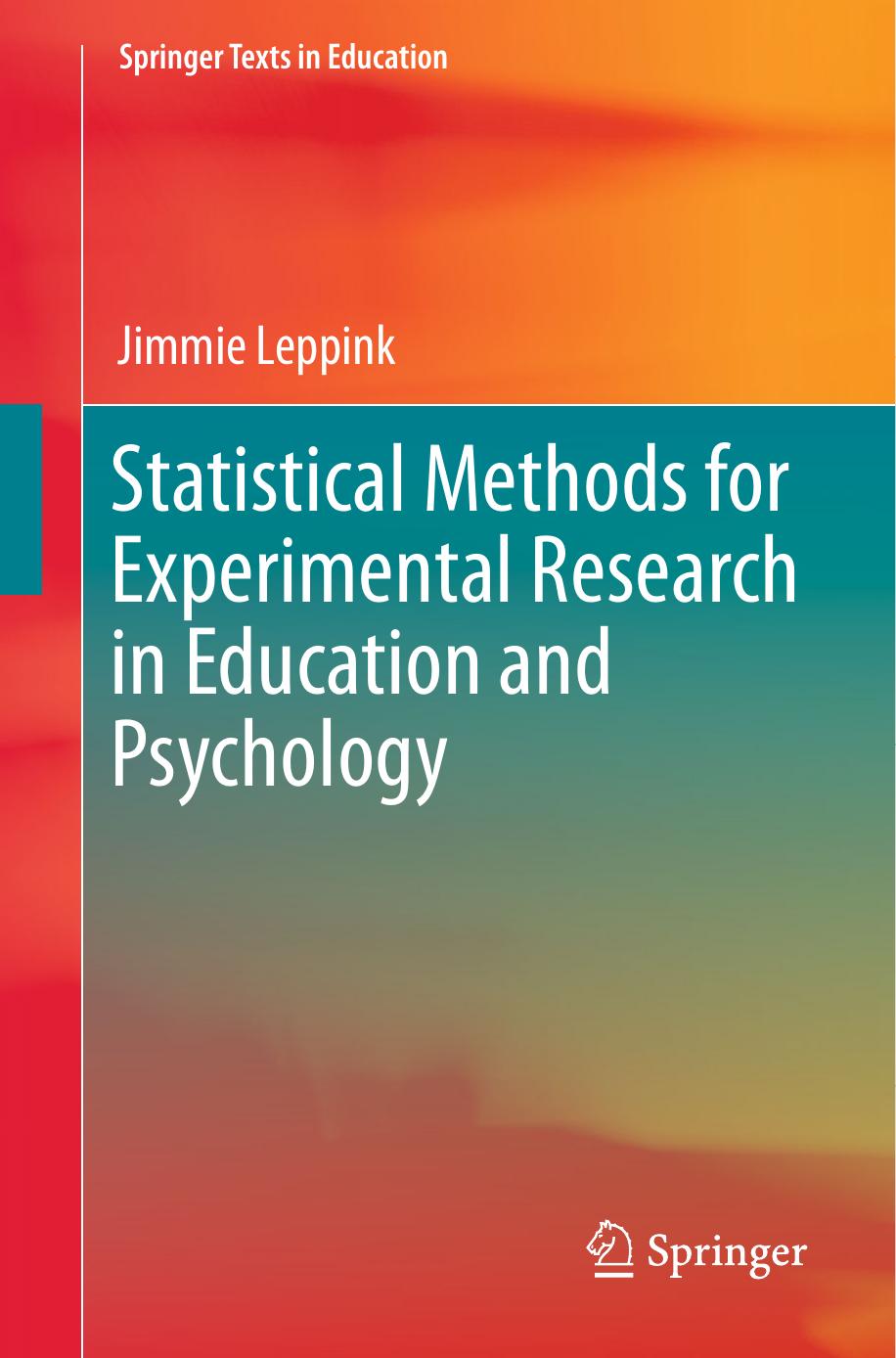Statistical Methods for Experimental Research in Education and Psychology by Jimmie Leppink

Author:Jimmie Leppink
Language: eng
Format: epub, pdf
ISBN: 9783030212414
Publisher: Springer International Publishing
Ms and SDs of post-test performance are as follows: M = 8.170 and SD = 2.128 in the control condition, M = 9.302 and SD = 1.917 in treatment A, and M = 8.962 and SD = 1.951 in treatment B. These differences correspond with R2 = 0.054 and adjusted R2 = 0.042 (η2 = 0.054 and ω2 = 0.042). One-way ANOVA yields a statistically significant outcome: F2, 156 = 4.468, p = 0.013. Like with the two-samples t-test, the common ANOVA model assumes population SDs to be equal. In the case of a substantial departure from this assumption, there are two alternatives that do not assume equal SDs: Brown-Forsythe’s F-test (Brown & Forsythe, 1974) and Welch’s F-test (Welch, 1951). In the experiment at hand, the largest SD is 2.128 and the smallest SD is 1.917. The resulting ratio is: 2.128/1.917 ≈ 1.110. This is smaller than the ratio in Chaps. 2 and 5, where we see the two variants of the two-samples t-test yield near identical results. SPSS provides all three tests—the default ANOVA F-test and its two alternatives—and we see very similar outcomes: Brown-Forsythe’s F2, 154.645 = 4.468, p = 0.013; Welch’s F2, 103.797 = 4.240, p = 0.017. In short, we may as well proceed treating the SDs as (approximately) equal.
The −2LL of the null model (i.e., Model 0, which represents H0: no differences) is 677.615, and that of the ANOVA model is 668.759. In the null model, one M is used for all conditions; in the ANOVA model, each condition has its own M. Therefore, given three conditions, the difference between the two models in df = 2. The difference in −2LL is approximately -distributed, and the -distribution is that of the difference in df between the model, hence: . In our case, we find , p = 0.012. For Model 0, we find AIC = 681.615 and BIC = 687.752 (Mplus). For the ANOVA model, we find AIC = 676.759 and BIC = 689.034. Running a Bayesian one-way ANOVA with a default prior (Rouder, Engelhard, McCabe, & Morey, 2016; Rouder, Morey, Speckman, & Province, 2012; Rouder, Morey, Verhagen, Swagman, & Wagenmakers, 2017; Wetzels, Grasman, & Wagenmakers, 2012) in JASP, we find BF10 = 2.789 (error = 0.009%). In other words, based on AIC and p-value, we may prefer the ANOVA model, while based on BIC we may prefer the null model, and BF10 indicates some preference towards the ANOVA model but the evidence is negligible.
Download
Statistical Methods for Experimental Research in Education and Psychology by Jimmie Leppink.pdf
This site does not store any files on its server. We only index and link to content provided by other sites. Please contact the content providers to delete copyright contents if any and email us, we'll remove relevant links or contents immediately.
The Art of Coaching Workbook by Elena Aguilar(51004)
Trainspotting by Irvine Welsh(21524)
Twilight of the Idols With the Antichrist and Ecce Homo by Friedrich Nietzsche(18515)
Fangirl by Rainbow Rowell(9109)
Periodization Training for Sports by Tudor Bompa(8176)
Change Your Questions, Change Your Life by Marilee Adams(7641)
This Is How You Lose Her by Junot Diaz(6804)
Asking the Right Questions: A Guide to Critical Thinking by M. Neil Browne & Stuart M. Keeley(5664)
Grit by Angela Duckworth(5526)
Red Sparrow by Jason Matthews(5392)
Paper Towns by Green John(5094)
Room 212 by Kate Stewart(5041)
Ken Follett - World without end by Ken Follett(4648)
Housekeeping by Marilynne Robinson(4349)
The Sports Rules Book by Human Kinetics(4304)
Double Down (Diary of a Wimpy Kid Book 11) by Jeff Kinney(4210)
Papillon (English) by Henri Charrière(4200)
The Motorcycle Diaries by Ernesto Che Guevara(4021)
Exercise Technique Manual for Resistance Training by National Strength & Conditioning Association(3965)
